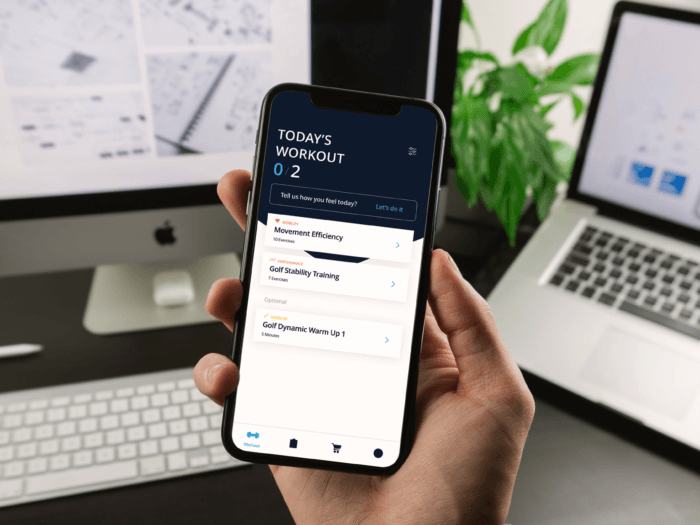Things you should know
“I have this great idea for an app, and I want to talk to you about developing it,” the excited voice on the other end of the phone says.
It’s a call we get about once a day.
The voice goes on to say their idea will change the world, solve problems people didn’t even know they had, or disrupt the (insert industry here) industry. All they need is someone who can build the app for them.
We love getting these calls, because we’re inspired by people’s passion and entrepreneurial spirit. The down side is, invariably, we have to be the ones to bring them back to earth.
Too often, they don’t realize all the work, thinking and planning that needs to go into an app. More importantly, they aren’t aware of what can happen if this careful planning doesn’t take place.
What can happen is they have to start over or even scrap the idea entirely after losing a sizable investment of time and money.
To avoid this fate, there are five big questions every entrepreneur should ask themselves before they hire a developer.
1. What is the business/product idea behind the app?
The first mistake entrepreneurs usually make is thinking developing an app is a technical challenge. In reality, it’s a business challenge and a marketing challenge.
If the app is to be the basis for an entirely new company, the first step is to write a business plan. We admit this isn’t the fun part, but it is vital to ensuring you have a sound business strategy. And, with tools like the Business Model Canvas, it’s easier than ever.
Once the business plan is written, or if the company is already established, the next step is thinking of the app as a product. That means validating it as a product people will want and use, and is likely to generate the desired revenue (through paid use, advertising, or another monetization strategy) before you sink money into creating it.
There is a number of ways you can approach this. You can work with a user experience (UX) designer who can develop the basic visuals you need to show the app to potential users and gain their input (more on that later in the article).
You can also follow a product planning, prototyping, and development model, which can guide you through the process and help you ask the right questions to validate your idea.
There are three main models we use, either individually or in sequence, depending on the client’s individual needs and the development stage of their product. One process we use is the Design Sprint, which guides you from idea to prototype in a week.
Our Digital Product Blueprint process is designed to create a clear understanding of product goals and features, user personas, visual design, and solution architecture. The result is a detailed “design prototype” that’s ready to take to the development stage.
Another process we use is the Minimum Viable Product (MVP). Famously used by DropBox, the MVP gets the product in the hands of users as fast as possible. This results in faster feedback and user insights, which are invaluable to the development of any product. The MVP results in a product that is ready to launch.
2. Who is your competition?
One of the most important things you should understand is what the market is already doing. We’ve had companies approach us with ideas for apps, thinking they had the Next Big Thing, only to have a quick Google search reveal there were a few companies already doing what they do.
Let’s be clear: the fact you have competition shouldn’t deter you. Your approach might be better, faster, more intuitive, or just plain different. But you should always be aware of your competition.
Look beyond your personal experience and conduct some research into how the market is behaving. This will give you insights into the potential demand for your product and how you can shape it to meet market needs.
3. How will people really use your app?
The best apps are simple and intuitive. They just work. DropBox is a classic example of an app that’s so simple, it seems obvious. But that simplicity is the result of a long (and expensive) process of research, prototyping, testing, and learning.
You have to understand how people will interact with your app, considering all the possibilities — the technology they will use, where they will be, why they would use it, what will they expect it to do — and much, much more. The validation tools and processes mentioned above, such as the Digital Product Blueprint, will help you do this.
Another way is simply to ask people. In the DropBox example, founder Drew Houston was having trouble explaining to people how the new technology worked. So he made a simple video that explained it and showed it to potential users. Not only did he gain valuable feedback, but before long, his beta waiting list was up to 75,000 people.
You can also create a simple website that explains the idea, or even a Google Slides presentation. The key is to get your idea in front of as many people as possible to get their feedback and interest.
4. How will you fund your product’s development?
With the expense that goes into the development of a successful app, outside funding is often a necessity. But getting an audience with investors is not easy, and when it happens, you’d best be prepared.
The prototyping process can give you a leg up, as it will give you insights into the user and the market. It may even net you a waiting list of early adopters, ready to download your beta version, as it did for DropBox. Investors love that.
In any case, you’ll want to arm yourself with the tools and practice you need to make a successful presentation. One of the best things you can do is get involved in the startup community in your area. The Atlanta Tech Village, for example, offers Pitch Practice, allowing entrepreneurs to hone their elevator pitch before they meet with investors.
5. How will you protect your idea?
As an entrepreneur with what you think is a billion-dollar idea, you will naturally want to protect it. You have legal tools at your disposal, specifically non-disclosure agreements (NDAs), but there are a few things you should know about them.
First, an NDA is only as good as your ability to fund its defense. Second, if you’re using an offshore developer (whose low prices are tempting), NDAs are difficult, if not impossible to enforce overseas.
Finally, you should have a sense of when you need an NDA and how restrictive it should be. If an NDA is written to be too broad, it effectively locks anyone who signs it out of entire sectors, and no reputable firm would sign it. The last thing you want to do is scare off people who can help you.
—
There are plenty of developers who stand ready to take your money and do what you ask them, but they don’t always have your best interests at heart. More importantly, if you haven’t gone through the process of validating and designing your product, you won’t know how to guide them in developing what you really want.
Creating an app can be an expensive endeavor, but the process of validating the idea doesn’t have to be. By taking advantage of the tools and resources available, along with a dash of creative ingenuity, as in the case of DropBox, you can give yourself the best chance of success in a highly competitive field.



